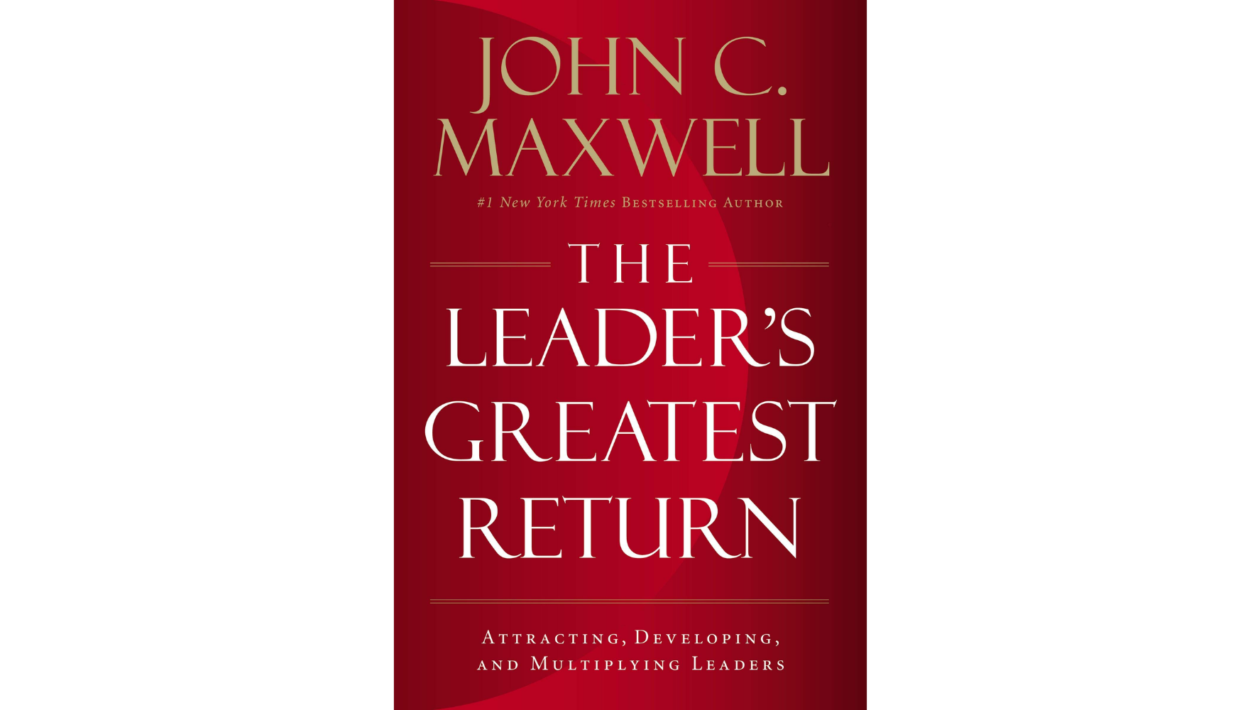By J. C. Maxwell
New York, NY: HarperCollins Leadership (2020)
Hardcover edition, 256 pages
Reviewed by ANGEL D. ACEVEDO
John C. Maxwell is a pastor, author, and speaker who has written many books about leadership. He is also the creator of the John C. Maxwell Team, a leadership, coaching, speaking, and training development program. In his latest book, The Leader’s Greatest Return, Maxwell explains that any organization’s success is based on having a culture that develops leaders. We see a lack of leaders in the world, across all types of organizations, because few have developed a culture to identify, attract, and equip new leaders. Some don’t do this because developing leaders is difficult; it takes a lot of time, energy, and resources.
In this book, Maxwell identifies and expands on 10 steps that leaders can take to have or change their organizations into a culture that develops leaders. Why is such a culture important? Because we have a global leadership crisis, across businesses, nonprofits, families, churches, communities, etc. This is noticeable everywhere we look at today. Lack of good leaders in politics, religions, education, sports—you name it. However, the good news is that leaders can be developed. Although it is not easy, it is worthwhile. Such development is complex because it demands a significant time investment which never actually ends. In this fast and quick day and age, investing time in developing leaders is not something all organizations will do. When an organization stops developing and/or growing leaders, that organization will decay and eventually die; this is the consequence of not investing in developing leaders.
One thing that needs to be done to grow leaders is to start with those around us—those closest to us— because they will determine our teams’ kind of success. Another thing needed to grow leaders is to change the leadership culture. “A leadership culture exists when leaders are routinely and systematically developed, and you have a surplus of leaders ready for the next opportunity or challenge” (p. xix). This is key. This is the role of the CEO, senior pastor, etc., to make sure both leaders and potential leaders are consistently being identified, trained, and developed.
Throughout the book, Maxwell gives readers ideas of how to attract, develop, and multiply leaders. One of these ideas is what he calls a “leadership table,” which is a place to attract leaders into your organization. The leadership table is “where small groups of men and women come together and discuss their experiences, apply values-based lessons to their lives, and hold one another accountable for positive change” (p. 22).
Identifying and attracting leaders to any organization is just the beginning and, compared to the other steps that Maxwell identifies, they might be the easy ones. Once you have the leaders, how can you motivate them to keep leading and passing on the baton to develop other leaders? “By far, the strongest motivator I’ve seen in people is purpose. The human spirit comes alive when it finds a cause worth fighting for” (p. 68). This is why mission and vision are so important in an organization. If these elements are lacking, most people will not be motivated to lead and serve.
When I started my career as a pastor, I spoke with one of my former pastors and friends, and he told me that the first thing I should do in any church that I pastor is to gather the saints and talk about the vision and mission of the church. Why? Because doing so will give the body purpose, which is the motivation to work, serve, and move forward. Maxwell tells his experience regarding motivation. How does the leader motivate people? His answer is that he doesn’t; he simply tries to inspire people and help them find their own motivations. Lead by example, just like Jesus, the greatest leader, did.
Lastly, Maxwell talks about compounding leaders’ effects, meaning that when a leader invests in developing leaders, they do the same. The author shares seven benefits of compounding leaders; here, I will only mention two. The first benefit is that “developed leaders help you carry the leadership load” (p. 198). There are few things as satisfying, in the leadership world, as having a team that helps each other carry their load. The second benefit is that “developed leaders ensure a better future for your organization” (p. 203).
Maxwell says to “never be afraid to hire or manage people who are better at certain jobs than you are. They can only make your organization stronger” (p. 204). The leader cannot be selfish or prideful, because it is not about him/her, but about the organization. The church setting is not about the pastor, the leaders, how many people come to the church, how many good activities the church has planned, or how “successful” the church is. In the church setting, the vision is God’s Kingdom, and the mission is to make disciples. Leaders should be focused on who can lead effectively for God’s kingdom.
I give this book my highest recommendation for all who want to create a culture to develop leaders so that their mission, vision, and growth can be a reality. Ultimately, such a culture will allow a plentiful harvest of good and needed leaders in the world. As Maxwell writes:
Will it be challenging? Yes. Will it take a long time to achieve? You know it. Will you make mistakes? Undoubtedly. But will it be worth it? Absolutely! . . . Developing leaders is the most impacting and rewarding thing you can do as a leader……There’s no time to lose. Start today. (p. 208)
ANGEL D. ACEVEDO currently serves a three-church district in the Idaho Conference of the Seventh-day Adventists.

